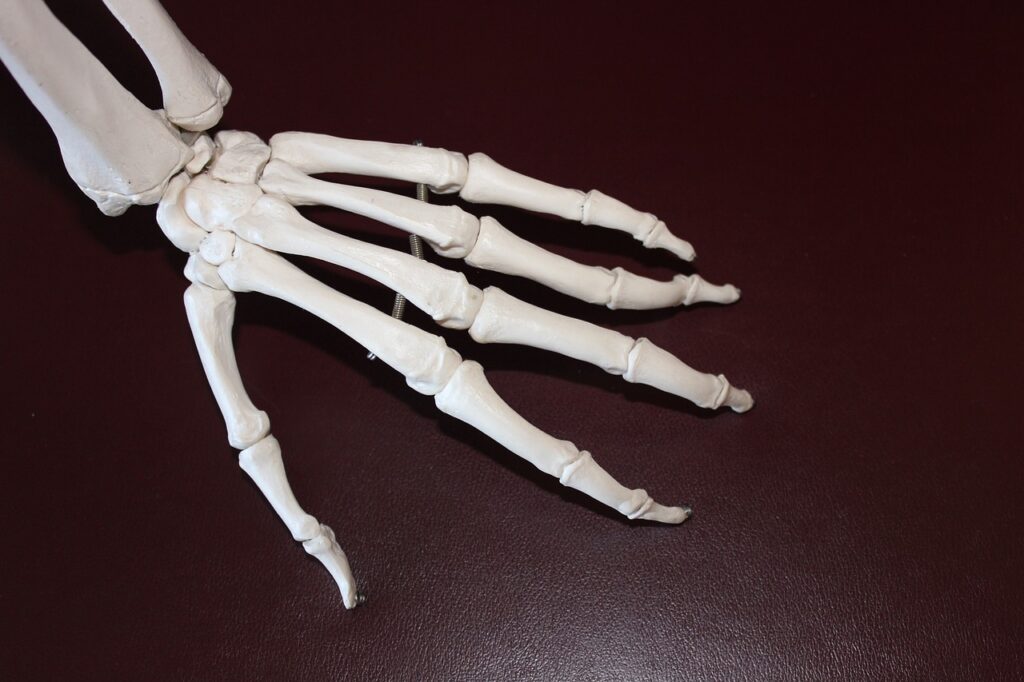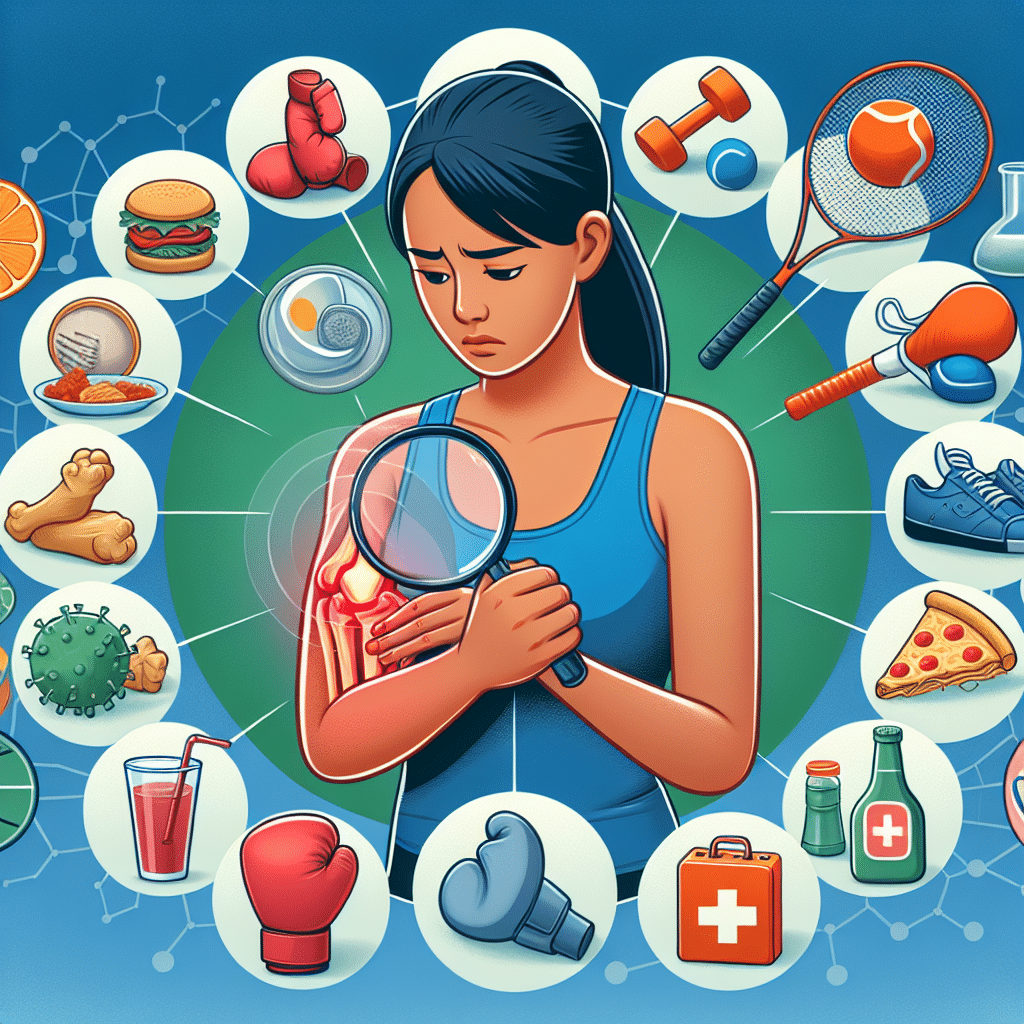Do you ever experience joint pain as a young adult and wonder why? In this article, we will explore the various causes of joint pain in young adults. From sports injuries to underlying conditions, there are several factors that can contribute to joint pain at a younger age. By understanding these causes, you will be better equipped to manage and prevent joint pain, ensuring a healthier and more active lifestyle. So, let’s dive into the world of joint pain causes in young adults and discover the solutions that await you.
Introduction
Joint pain can affect people of all ages, including young adults. If you’re experiencing joint pain, it’s important to understand the causes so that you can take appropriate measures to manage and alleviate your discomfort. There are various factors that can contribute to joint pain in young adults, ranging from injuries to underlying medical conditions. In this article, we will explore the different causes of joint pain in young adults and provide insights into each category.
Injury Related Causes
Sports Injuries
Engaging in physical activities and sports can be enjoyable and beneficial for overall health, but they can also put young adults at risk for joint injuries. Sports injuries, such as sprains, strains, and joint dislocations, are common causes of joint pain in this age group. These injuries can occur due to sudden trauma, repetitive movements, or overexertion during exercise. Poor technique, inadequate warm-up exercises, or lack of protective gear can also contribute to sports-related joint pain.
Accidental Injuries
Accidents, such as falls, car accidents, or other traumatic incidents, can lead to joint pain in young adults. The impact from these accidents can cause damage to the joints, resulting in pain, swelling, and limited mobility. It’s particularly important to seek immediate medical attention if you have experienced a significant injury, as prompt diagnosis and treatment can help prevent further complications.
Overuse Injuries
Participating in repetitive activities or overworking the joints can lead to overuse injuries, particularly in young adults who engage in rigorous physical activities or have physically demanding jobs. Overuse injuries often develop gradually, as repetitive stress causes strain and inflammation in the joints. Common examples include tendonitis or bursitis, which can cause persistent joint pain, tenderness, and swelling.

Inflammatory Causes
Rheumatoid Arthritis
Rheumatoid arthritis (RA) is an autoimmune disease that causes chronic inflammation in the joints. Although it’s more commonly associated with older adults, RA can also affect young adults. The condition occurs when the immune system mistakenly attacks the body’s own tissues, leading to joint pain, stiffness, and swelling. Alongside joint symptoms, individuals with RA may experience fatigue, fever, and weight loss. Early diagnosis and intervention are crucial for managing the disease and preventing joint damage.
Lupus
Lupus, also known as systemic lupus erythematosus (SLE), is another autoimmune disease that can cause joint pain in young adults. The exact cause of lupus is unknown, but it is believed to involve a combination of genetic and environmental factors. In addition to joint pain, individuals with lupus may experience fatigue, skin rashes, fever, and other systemic symptoms. Prompt medical evaluation and appropriate treatment are essential for managing lupus and minimizing its impact on joint health.
Psoriatic Arthritis
Psoriatic arthritis (PsA) is a chronic inflammatory condition that affects both the skin (psoriasis) and the joints. Psoriasis is a skin disorder characterized by red, scaly patches, and when it coexists with joint inflammation, it is referred to as psoriatic arthritis. Joint pain, stiffness, and swelling are hallmark symptoms of PsA. Early intervention and a multidisciplinary approach involving dermatologists and rheumatologists can help manage the disease and improve joint health.
Infectious Causes
Septic Arthritis
Septic arthritis, also known as infectious arthritis, is an infection that affects the joints. It occurs when bacteria or other infectious agents enter the body and spread to the joints through the bloodstream. Young adults can develop septic arthritis as a result of an existing infection or from a joint injury that becomes infected. Symptoms may include severe joint pain, swelling, redness, warmth, and fever. Prompt medical attention is vital to prevent joint damage and potential complications.
Viral Infections
Certain viral infections can cause joint pain in young adults. Viruses like the Epstein-Barr virus, parvovirus, or hepatitis can lead to joint inflammation and discomfort. These infections often resolve on their own with time, but seeking medical advice is recommended to manage symptoms and rule out other potential causes of joint pain.
Bacterial Infections
Bacterial infections can also contribute to joint pain in young adults. Conditions such as Lyme disease or bacterial endocarditis can affect the joints, leading to pain, swelling, and limited mobility. Proper diagnosis and treatment of the underlying infection are crucial to prevent long-term complications and promote joint healing.

Degenerative Causes
Osteoarthritis
Osteoarthritis (OA), also known as degenerative joint disease, is a common cause of joint pain in young adults. While it is more prevalent in older individuals, younger adults can develop osteoarthritis due to joint injuries, repetitive movements, or genetic factors. This condition occurs when the protective cartilage in the joints gradually wears away, resulting in pain, stiffness, and reduced range of motion. Proper management through lifestyle modifications, medication, and physical therapy can help alleviate symptoms and improve joint function.
Degenerative Disc Disease
Joint pain in young adults can also arise from degenerative disc disease (DDD) in the spine. DDD occurs when the intervertebral discs that cushion the vertebrae gradually lose their water content and become less flexible, leading to pain and reduced mobility. Factors such as poor posture, spinal injuries, or genetic predisposition can contribute to the development of DDD. Treatment options include physical therapy, pain management techniques, and in severe cases, surgery may be necessary.
Autoimmune Causes
Ankylosing Spondylitis
Ankylosing spondylitis (AS) is a chronic inflammatory condition that primarily affects the spine. It causes fusion of the vertebrae, leading to stiffness, pain, and reduced mobility. Although it typically manifests in early adulthood, AS can affect young adults. Apart from spinal symptoms, AS can also involve inflammation in other joints, such as the hips, knees, and shoulders. Early diagnosis and appropriate treatment can help manage symptoms and slow down the progression of the disease.
Juvenile Idiopathic Arthritis
Juvenile idiopathic arthritis (JIA) is a form of arthritis that occurs in individuals under the age of 16. It is characterized by chronic joint inflammation and can affect various joints, leading to pain, swelling, and stiffness. The exact cause of JIA is unknown, but it is believed to involve a combination of genetic and environmental factors. Early diagnosis and treatment are crucial in preventing joint damage and preserving normal joint function.

Genetic Causes
Joint Hypermobility Syndrome
Joint hypermobility syndrome (JHS) is a hereditary condition characterized by increased joint flexibility beyond the normal range. Although it may not always cause pain, some individuals with JHS may experience joint pain, instability, and an increased risk of injuries. Physical therapy, strengthening exercises, and orthotic devices can help manage symptoms and reduce the risk of complications associated with hypermobile joints.
Ehlers-Danlos Syndrome
Ehlers-Danlos syndrome (EDS) is a group of genetic disorders that affect the body’s connective tissues, including the joints, skin, and blood vessels. Joint pain and hypermobility are common features of EDS, along with other symptoms such as fragile skin and easy bruising. Treatment for EDS focuses on managing symptoms and preventing complications through a multidisciplinary approach involving various healthcare professionals.
Metabolic Causes
Gout
Gout is a metabolic disorder that occurs due to the buildup of uric acid crystals in the joints. It commonly affects the big toe but can also involve other joints. Young adults can develop gout as a result of dietary factors, genetic predisposition, or certain medications. Gout attacks are characterized by sudden and intense joint pain, redness, and swelling. Lifestyle modifications, medication, and dietary changes can help manage gout and prevent recurrent attacks.
Pseudogout
Similar to gout, pseudogout is a type of crystal-induced arthritis that affects the joints. Instead of uric acid crystals, pseudogout is caused by calcium pyrophosphate crystals. Pseudogout can lead to sudden and painful joint inflammation, predominantly affecting the knees, wrists, and ankles. Treatment options include medication to manage inflammation and pain relief.

Systemic Diseases
Lyme Disease
Lyme disease is a tick-borne illness caused by the bacterium Borrelia burgdorferi. In addition to flu-like symptoms, Lyme disease can cause joint pain, particularly in untreated cases. If left undiagnosed or untreated, Lyme disease can lead to more severe joint problems and other long-term complications. Early detection and appropriate antibiotic treatment are crucial in preventing joint damage and addressing the systemic effects of Lyme disease.
Fibromyalgia
Fibromyalgia is a chronic pain disorder that affects millions of individuals worldwide. Although it primarily manifests as widespread muscle pain and tenderness, fibromyalgia can also cause joint pain and stiffness in some cases. The exact cause of fibromyalgia is unknown, but it is believed to involve abnormalities in how the brain processes pain signals. Treatment for fibromyalgia focuses on symptom management through a combination of medication, therapy, and lifestyle changes.
Hormonal Causes
Menstrual Cycle Changes
Fluctuations in hormones during the menstrual cycle can affect joint health in some young adults. Some individuals may experience joint pain, swelling, or stiffness in the days leading up to their period or during specific phases of the menstrual cycle. While the exact mechanisms are not fully understood, hormonal changes can influence the inflammatory response in the body. Managing menstrual symptoms and adopting strategies like regular exercise and pain medication can help alleviate joint discomfort during these times.
Pregnancy
Pregnancy can also contribute to joint pain in young adults, particularly in the hips, knees, and lower back. As the body prepares for childbirth, the ligaments and joints in the pelvis loosen to facilitate delivery. This increased joint laxity can lead to discomfort and instability. Additionally, weight gain and changes in posture during pregnancy can further strain the joints. Gentle exercise, proper posture, and prenatal exercises tailored to joint health can help alleviate pregnancy-related joint pain.
Psychosomatic Causes
Stress
Psychosomatic factors, such as stress, can have an impact on joint health. Stress can lead to muscle tension and increased inflammation in the body, which can manifest as joint pain. Additionally, stress may contribute to poor sleep patterns and overall lifestyle habits that can exacerbate joint discomfort. Incorporating stress management techniques, such as relaxation exercises, mindfulness, and seeking support, can help mitigate the impact of stress on joint health.
Anxiety
Anxiety is another psychosomatic factor that can contribute to joint pain in young adults. Anxious thoughts and feelings can trigger heightened muscle tension and exacerbate existing joint discomfort. Self-care strategies, counseling, and relaxation techniques can be beneficial in managing anxiety-related joint pain.
Conclusion
Joint pain in young adults can have various causes, ranging from injuries to underlying medical conditions. By understanding the different factors that contribute to joint pain, you can take proactive steps to manage and alleviate your discomfort. If you are experiencing persistent or worsening joint pain, it is recommended to consult with healthcare professionals for proper evaluation, diagnosis, and treatment. With appropriate care and management, you can work towards maintaining healthy joints and enjoying an active lifestyle.